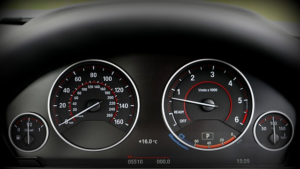Days After N.Y. Speed Cameras Go Full-Time, Two Pedestrians Die in Crash – The New York Times
Two pedestrians were killed after cars collided in northern Manhattan’s Inwood neighborhood early Wednesday morning, just two days after New York City announced that speed cameras would operate around the clock to stem traffic fatalities.
Joel Adames, 31, of Manhattan, and David Fernandez, 40, of the Bronx, were killed after a BMW …….

Two pedestrians were killed after cars collided in northern Manhattan’s Inwood neighborhood early Wednesday morning, just two days after New York City announced that speed cameras would operate around the clock to stem traffic fatalities.
Joel Adames, 31, of Manhattan, and David Fernandez, 40, of the Bronx, were killed after a BMW sedan traveling north on Sherman Avenue hit a Subaru moving south, the police said. The Subaru collided with two parked cars and struck the two men.
Mr. Adames was taken to Allen Pavilion Hospital and Mr. Fernandez (whose age the police originally gave as 32) was taken to Harlem Hospital. The drivers of the two vehicles remained at the scene, the police said. They did not identify the drivers or say whether either had been charged in the deaths.
A memorial of white, yellow, red, green and pink candles had been set up at the intersection by late morning Wednesday.
The scene in north Manhattan has been repeated across New York City for decades as officials have wrestled with how to reduce traffic fatalities and injuries. The intersection of West 207th Street and Sherman Avenue has been a particularly dangerous example of the deadly problem.
Over the past five years, 36 people have been injured there, including 12 pedestrians and two cyclists, according to a statement from Transportation Alternatives, a bicycle and pedestrian advocacy group. In 2021, a 22-year-old motorcyclist was killed on Sherman Avenue three blocks from the intersection at Dyckman Street, and a 68-year-old pedestrian was killed in 2017 two blocks away at Academy Street, a Transportation Alternatives spokesman said.
Mario Rodriguez, a music producer who lives in the neighborhood, said that loud and fast cars are ever-present along four-lane Sherman Avenue. In the year he has lived in the area, Mr. Rodriguez, 25, said he has seen two car accidents.
“There’s a long strip of the straight street, and a lot of people who have fast cars, they use this street to show off their cars, do doughnuts,” he said. “Even if you don’t see it, you can hear it.”
Mayoral administrations have grappled with reducing traffic fatalities across the city for years. Former Mayor Bill de Blasio said he would tame them when he took office. But he was still struggling to deliver by the end of his term last year.
In 2013, 184 pedestrians were killed on city streets, a number that had dropped to 94 by 2020, according to data from Vision Zero, the city’s traffic death initiative. That trend reversed last year, however, when traffic deaths surged to their highest in nearly a decade, with 125 pedestrians killed.
As of Aug. 1 this year, 60 pedestrians had been killed throughout New York City, according to city data. By comparison, 70 had died by this time in 2021.
Vision Zero, started under Mr. de Blasio in 2014, is aimed at eliminating serious traffic-related injuries and fatalities in New York City. The leading cause of injury-related deaths for children under the age of 14 is being struck by a vehicle, according to the city. Through a network of agencies and programs, like automated speed cameras, Vision Zero has been working to reduce fatalities on the city’s streets.
Although the city’s initiatives have had successes, with traffic deaths reaching the lowest number in recent history in 2018, the increase last year has put pressure on leaders.
Mayor Eric Adams and the city’s Department of Transportation announced that speed cameras would operate around the clock starting on Monday, after a new state law signed by Gov. Kathy Hochul allowed them to function at all hours of the day. In the past, the city’s 2,000 automated cameras were authorized to operate only on weekdays between 6 a.m. and 10 p.m.
“Speed cameras work: They save lives, reduce speeding, and help protect New Yorkers all across the city,” Mr. Adams said in a news release two days before the new cameras were turned on full-time. “And we are expanding this proven program to ensure that New Yorkers have that protection at any time of any day.”
Mr. Adams promised to invest $900 million over five years to the city’s safe streets program in April, which would include money for infrastructure upgrades to protect bike lanes and pedestrian areas.
Although the expansion of the speed camera program is a “win for street safety,” a layered approach is needed, said Danny Harris, director of Transportation Alternatives.
“To reach Vision Zero, we need the Adams administration to redesign streets for safety, and for Albany to let us expand additional automated enforcement tools,” Mr. Harris said. “Right now, state law only allows red light cameras at 1 percent of signalized intersections in all five boroughs.”
Back in Inwood on Wednesday, Rafael Anthony was dripping in sweat while he helped light candles at the memorial. Mr. Anthony, 24, said he was hanging out with friends up the block early Wednesday when he suddenly heard a commotion at the intersection.
“I ran over here, I noticed all the people on the floor,” he said.
Mr. Anthony said he recognized one of the people killed in the collision as a friend.
Mr. Anthony, who grew up in Inwood, said speeding cars in the area have increased dramatically in recent years, echoing sentiments from his neighbors.
“This is just speeding for no purpose,” said Everson Sanchez, 42, a cabdriver who also owns a muscle car. “Speeding to speed.”
Source: https://www.nytimes.com/2022/08/03/nyregion/inwood-ny-car-crash-pedestrian-death.html






